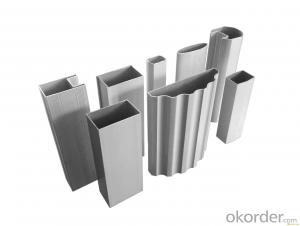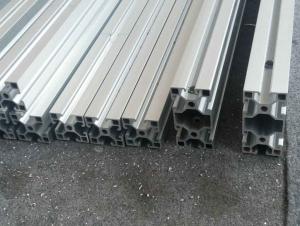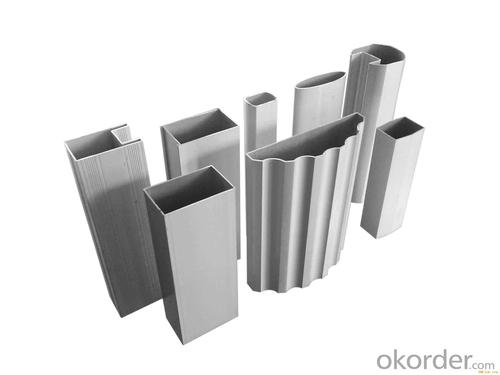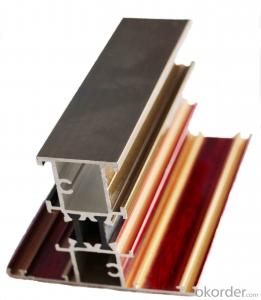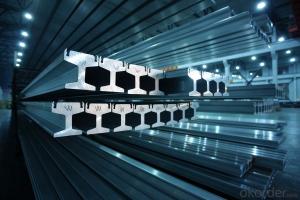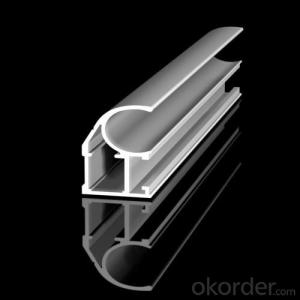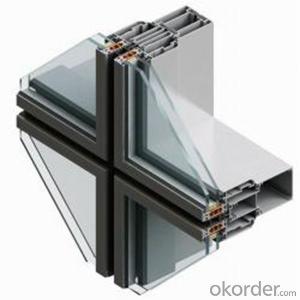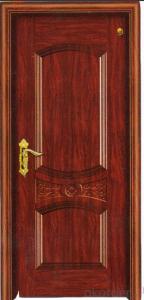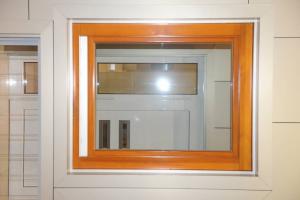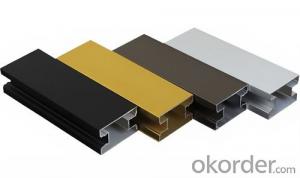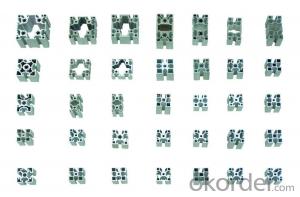Sapa Aluminum Profiles for Door and Window Making
- Loading Port:
- Guangzhou
- Payment Terms:
- TT OR LC
- Min Order Qty:
- 5 m.t.
- Supply Capability:
- 1000 m.t./month
OKorder Service Pledge
OKorder Financial Service
You Might Also Like
Specification
1.Structure of Aluminium Profile for Door and Windows Making Description:
Anodizing (also spelled anodising, particularly in the UK and Australia) is an electrolytic passivation process used to increase the thickness of the natural oxide layer on the surface of metal parts. Anodized aluminium surfaces, for example, are harder than aluminium but have low to moderate wear resistance that can be improved with increasing thickness or by applying suitable sealing substances.
2.Main Features of the Aluminium Profile for Door and Windows Making:
High corrosion-resistance;
weather-resistance;
heat-resistance;
alkali-resistance and impact-resistance properties.
3.Aluminium Profile for Door and Windows Making Images:
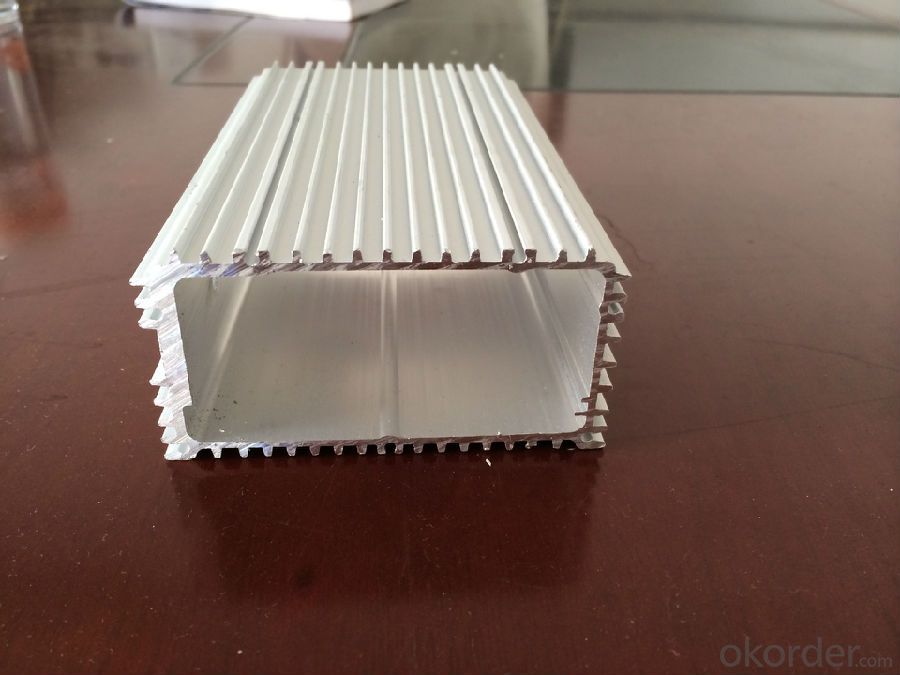
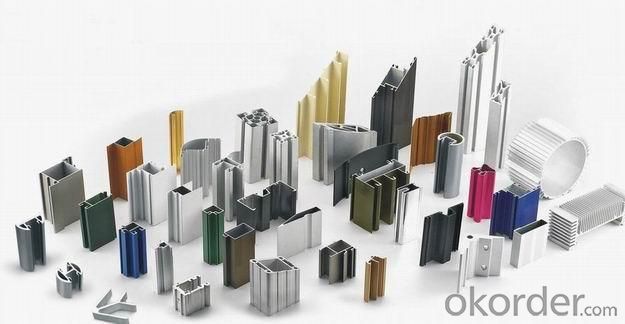
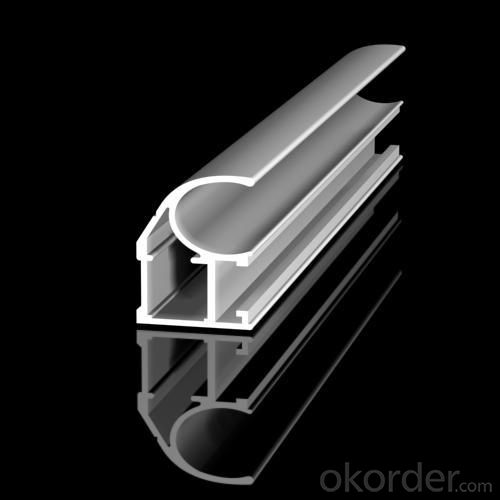
4.Aluminium Profile for Door and Windows Making Specification:
1. Material: 6063,6061,6060,6005,6005A,etc.
2. Temper: T5 or T6
3. Finish: Mill finish, anodizing, powder coating, electrophoresis, wooden transfer or pvdf/carbon-flouride coated, polishing, brushing, sand blasting
4. Various colors: Silver, bronze, black, gold, blue, grey, champagne, bright, etc.
5. Machining: Cutting, punching, drilling, tapping, milling, bending, welding, CNC etc.
5.FAQ:
①How about your company?
A world class manufacturer & supplier of castings forging in carbon steel and alloy steel,is one of the large-scale professional investment casting production bases in China, consisting of both casting foundry forging and machining factory. Annually more than 8000 tons Precision casting and forging parts are exported to markets in Europe, America and Japan. OEM casting and forging service available according to customer’s requirements.
②How to guarantee the quality of the products?
We have established the international advanced quality management system,every link from raw material to final product we have strict quality test;We resolutely put an end to unqualified products flowing into the market. At the same time, we will provide necessary follow-up service assurance.
- Q: This question asks for methods to protect aluminum profiles from water damage during the installation and usage phases.
- <p>To prevent water damage to aluminum profiles during installation or use, follow these steps: 1. Ensure the aluminum profiles are properly sealed with a high-quality sealant to prevent water penetration. 2. Use corrosion-resistant fasteners and hardware to avoid rusting. 3. Install drainage systems to direct water away from the profiles. 4. Regularly inspect and maintain the profiles to identify and repair any damage promptly. 5. Avoid installing profiles in areas with high humidity or direct exposure to rain. 6. Use protective coatings or paints that are water-resistant and compatible with aluminum. 7. Keep the profiles clean and free from dirt or debris that can trap moisture. By following these precautions, you can significantly reduce the risk of water damage to aluminum profiles.</p>
- Q: Can aluminum profiles be used in the production of signage?
- Signage production can utilize aluminum profiles, which are highly favored within the industry due to their durability, versatility, and attractive appearance. These profiles can be effortlessly molded and cut into various sizes and designs, thus making them suitable for a wide range of signage types like indoor and outdoor signs, lightboxes, and channel letters, among others. Additionally, aluminum profiles possess the advantages of being lightweight, resistant to corrosion, and capable of withstanding harsh weather conditions, ensuring the longevity of the signage. Moreover, these profiles can be easily painted, powder-coated, or anodized in different colors, offering limitless design options for signage projects. In conclusion, the incorporation of aluminum profiles in signage production presents numerous benefits in terms of longevity, customization, and visual appeal.
- Q: Is it possible to use aluminum profiles as a material for exterior walls or facades?
- <p>Yes, aluminum profiles can be used for exterior cladding or siding. They are known for their durability, low maintenance, and resistance to weather and corrosion, making them ideal for exterior applications. Aluminum profiles are lightweight, easy to install, and can be painted or finished in various ways to match architectural designs. They also offer excellent thermal performance and can be recycled, contributing to sustainability.</p>
- Q: Can aluminum profiles be bent or shaped?
- Yes, aluminum profiles can be bent or shaped. Aluminum is a highly malleable metal, allowing it to be easily formed into various shapes and angles through processes such as bending, rolling, or extrusion. This flexibility makes aluminum profiles a popular choice in many industries for creating customized designs and structures.
- Q: Are aluminum profiles suitable for fencing and gates?
- Indeed, fencing and gates can be effectively constructed using aluminum profiles. This material is widely favored in such applications due to its exceptional durability, strength, and minimal maintenance requirements. Its resistance to rust, corrosion, and weathering also renders it an outstanding choice for outdoor utilization. Moreover, aluminum profiles afford flexibility in terms of design, enabling the incorporation of various styles and customizable options. Despite their lightweight nature, these profiles maintain robustness, thus facilitating effortless installation and handling. Furthermore, the sustainability and eco-friendliness of aluminum cannot be overlooked, as it is entirely recyclable. In summary, aluminum profiles present a pragmatic and visually appealing solution for fencing and gates.
- Q: What are the different types of brackets used with aluminum profiles?
- There are several types of brackets commonly used with aluminum profiles, including corner brackets, T-slot nuts, angle brackets, and joiner brackets. These brackets are designed to provide stability, connection, and support when assembling aluminum profiles in various configurations and applications.
- Q: What are the different surface protection methods for aluminum profiles?
- There are several different surface protection methods available for aluminum profiles, each offering unique benefits and protection against various environmental factors. Some of the most common surface protection methods for aluminum profiles include anodizing, powder coating, and liquid coating. Anodizing is a popular surface treatment for aluminum profiles as it provides excellent corrosion resistance and enhances the appearance of the metal. This process involves immersing the aluminum profile in an electrolyte solution and applying an electric current to create an oxide layer on the surface. Anodizing can be carried out in various colors, allowing for customization and aesthetic appeal. Powder coating is another widely used method for protecting aluminum profiles. In this process, a dry powder is electrostatically applied to the surface of the metal and then cured in an oven. The powder melts and creates a durable, protective layer that offers resistance against scratches, UV rays, and chemicals. Powder coating is available in a wide range of colors and finishes, providing both protection and aesthetic options. Liquid coating, such as liquid paint or lacquer, can also be applied to aluminum profiles to provide protection against corrosion and other environmental factors. Liquid coatings offer versatility in terms of color and finishes, allowing for customization and meeting specific design requirements. However, compared to anodizing or powder coating, liquid coatings may be less durable and require more maintenance over time. Additionally, there are other surface protection methods for aluminum profiles, such as mechanical finishing techniques like brushing or polishing. These methods help to remove imperfections and create a smooth, visually appealing surface. In conclusion, the different surface protection methods for aluminum profiles include anodizing, powder coating, liquid coating, and mechanical finishing techniques. Each method offers distinct advantages in terms of corrosion resistance, durability, aesthetics, and customization options. The choice of surface protection method ultimately depends on the specific requirements, budget, and desired appearance of the aluminum profiles.
- Q: Can aluminum profiles be used in modular exhibition system manufacturing?
- Yes, aluminum profiles can be used in modular exhibition system manufacturing. Aluminum profiles are known for their lightweight and durable properties, making them ideal for constructing modular exhibition systems. They are easy to handle and assemble, allowing for quick and efficient installation and dismantling of exhibition booths. Additionally, aluminum profiles can be easily customized and reconfigured to meet specific design requirements, making them a versatile choice for modular exhibition system manufacturing.
- Q: Can aluminum profiles be used for creating lighting fixtures?
- Yes, aluminum profiles can be used for creating lighting fixtures. Aluminum is a versatile material that is lightweight, durable, and has excellent thermal conductivity, making it suitable for dissipating heat generated by lighting components. Additionally, aluminum profiles can be easily shaped, allowing for various designs and forms of lighting fixtures.
- Q: How to use aluminum profile on the side of roller conveyor?
- Aluminum profile inside 1 cm thick lining board, our unit of assembly line is like that
Send your message to us
Sapa Aluminum Profiles for Door and Window Making
- Loading Port:
- Guangzhou
- Payment Terms:
- TT OR LC
- Min Order Qty:
- 5 m.t.
- Supply Capability:
- 1000 m.t./month
OKorder Service Pledge
OKorder Financial Service
Similar products
Hot products
Hot Searches
Related keywords
